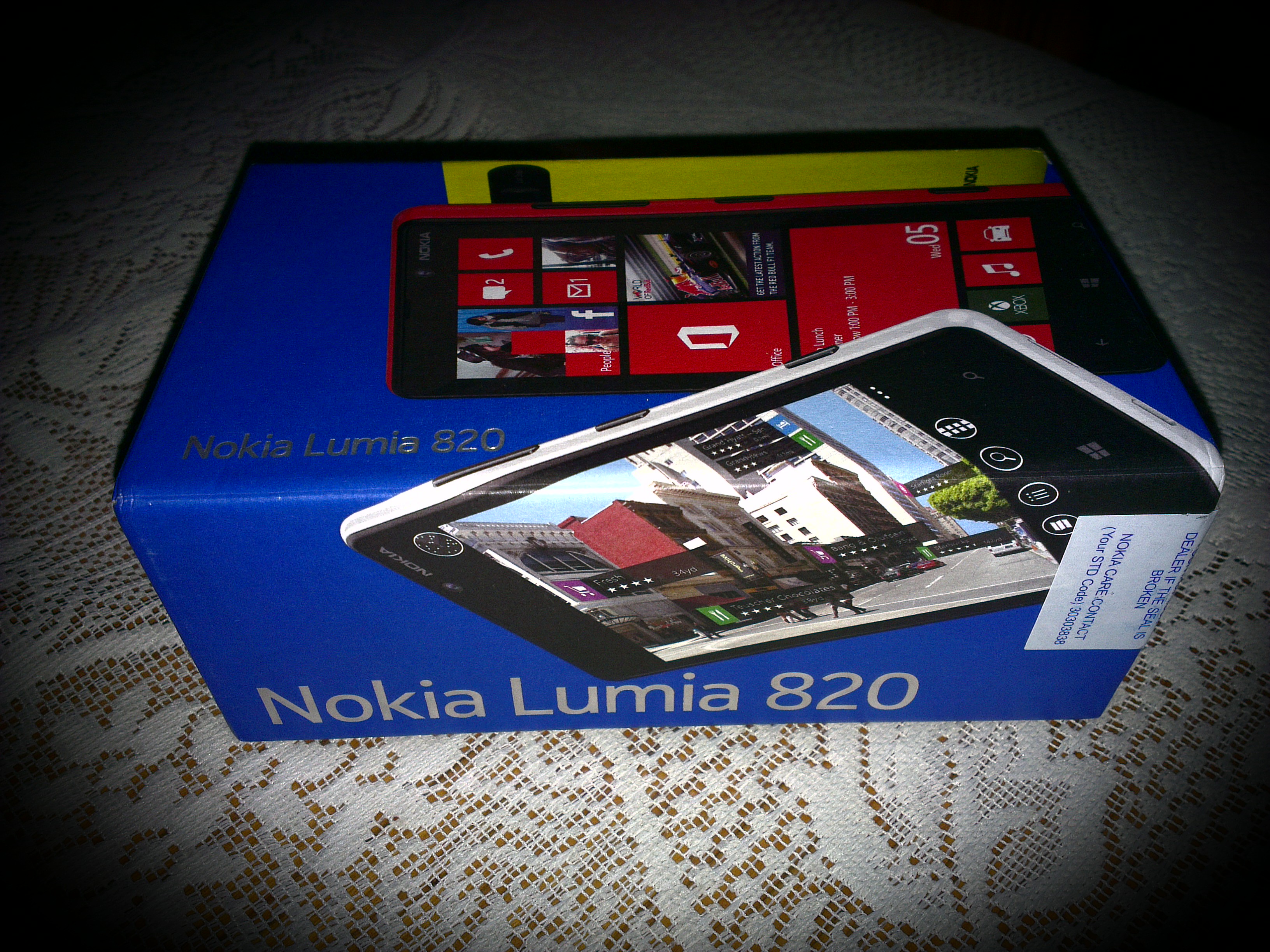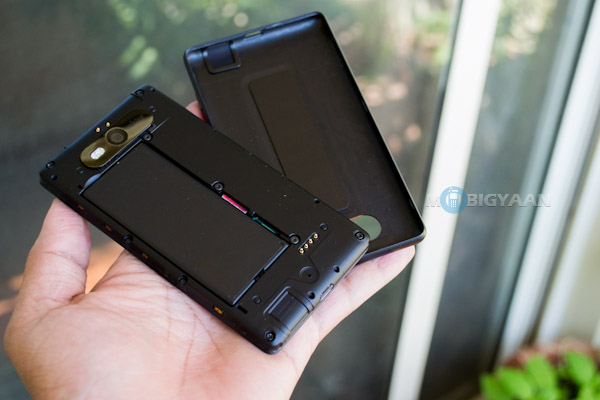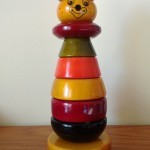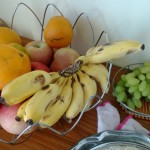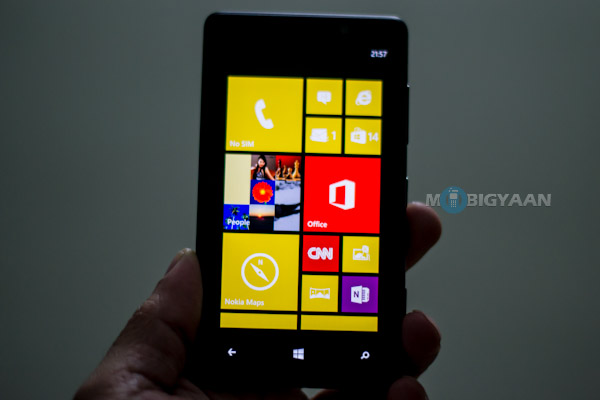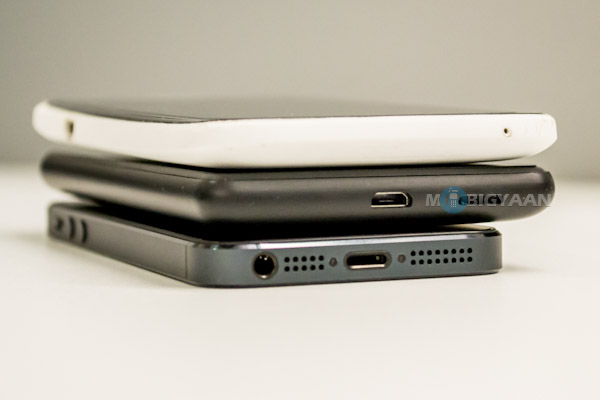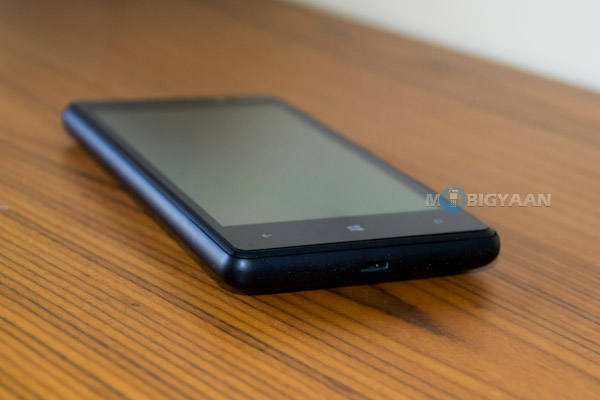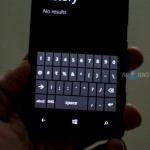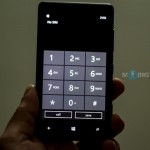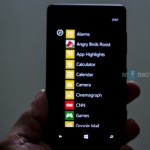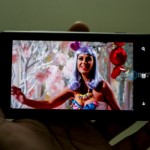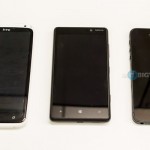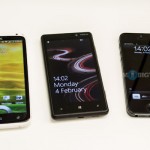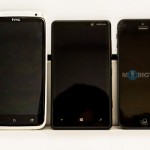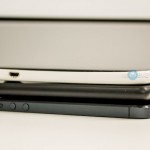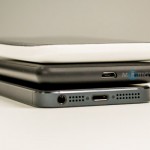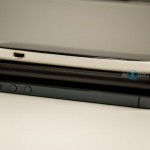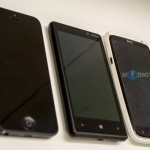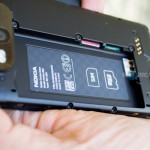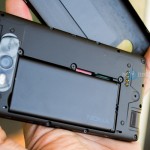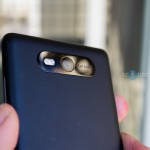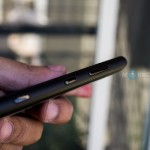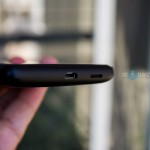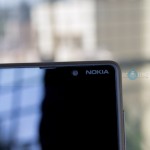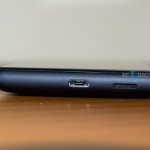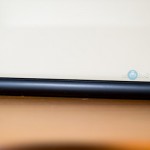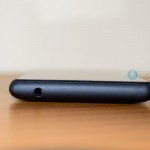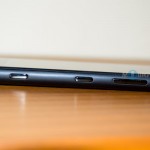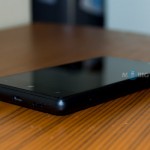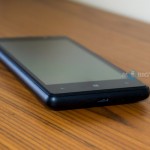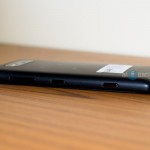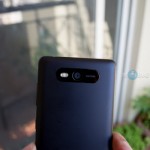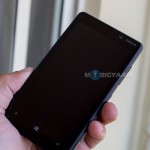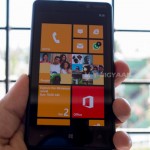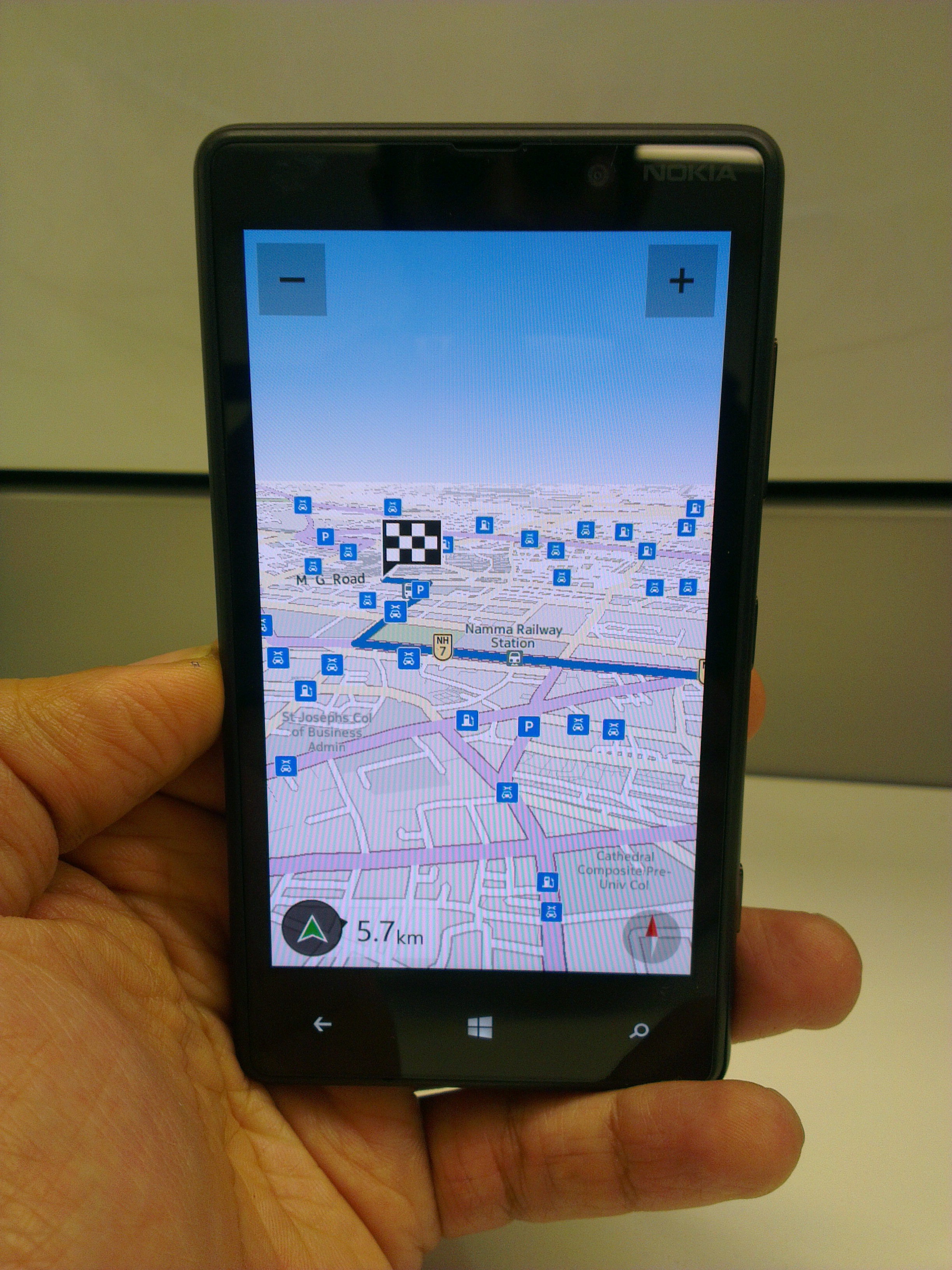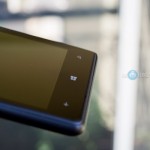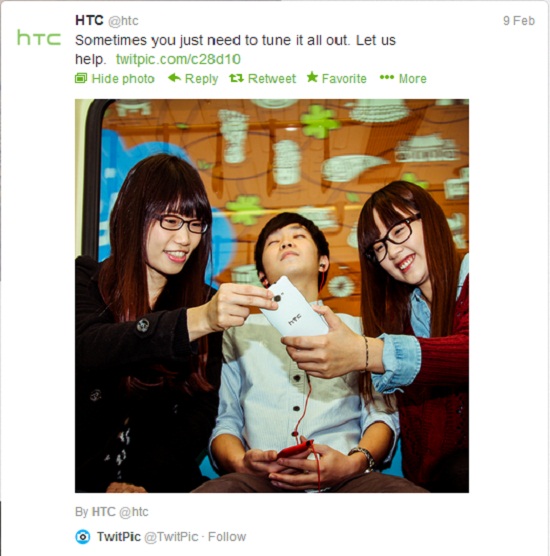The Nokia Lumia 820 is a mobile that is targeted to give you a comprehensive test drive of the Windows 8 user experience. Comprehensive, because it is not an entry level device and doesn’t hold back any hardware constraints like an entry level device. Test drive, because Windows 8 has lot more to offer, stowed away in the Nokia Lumia 920. The device costs a little over Rs. 25000 in the market, which may not be an inviting price offer for anyone who is looking to shift from Android platform. But if you want to immerse yourself in the WP8 user-experience and not willing to shell out a fortune on the bigger cousin Lumia 920, Lumia 820 is the right pick.
Design
The test device which we got was the Black Lumia. I would have loved to try the more flamboyant colour variants like the Pokemon yellow or the Ferrari red. The moment you hold the device in your hand, you would fall in love with it. The design is so right. Not too big, not too wide, just the right size. The material used is plastic, but definitely a high grade plastic. It’s not monolithic like its bigger cousin Lumia 920 and not being monolithic has its own advantages, like inter-changeable battery and back cover. Although opening the back cover is a bit tricky. The matte finish aids better grip. The high grade plastic is scratch resistant to an extent, because my son dropped it a couple of time and still there is no hint of any scratch or dent. The design is so smooth and minimalistic, and being a design freak myself, I must say Nokia has nailed it this time.
Hardware
The Nokia Lumia 820 retail box contains USB data cable, travel charger and earphones. No memory card or any spare back panels found. The display is 4.3 inch diagonally. It’s an AMOLED screen with a decent pixel density and great black levels, contrast and direct sunlight visibility. The screen is scratch resistant but a finger print magnet. Above the display, there is the ambient sensor and the proximity sensor lined up next to the front facing VGA camera. Below the display are the back-lit Windows phone touch-sensitive specific keys. The mic and call speaker is aesthetically hidden within the display screen borders. On the right side are the volume rocker, power cum lock key and the camera shutter button. The left side has nothing. At the top is the 3.5 mm audio socket. The bottom has the micro-usb socket and the speaker grill. The back of the device, along with the subtle Nokia logo, has the Carl Zeiss 8 MP camera and dual LED flash mounted on a chrome plate. The metal used here is again a finger print magnet and I am not totally sure as to how it would look like with the other flamboyant color variants. As mentioned earlier, the back panel is a bit tricky to pry open. I don’t mind because I am not a person who is going to be opening the back so often. Plus the panel fits in solidly well, with the device and I have nothing to complain. Once you open the panel, you see the battery and underneath the battery are the micro-SD card and micro-SIM slot, which means that they are not hot-swappable. But, why just a 1650 mAh battery? There is ample space to hold a larger battery.
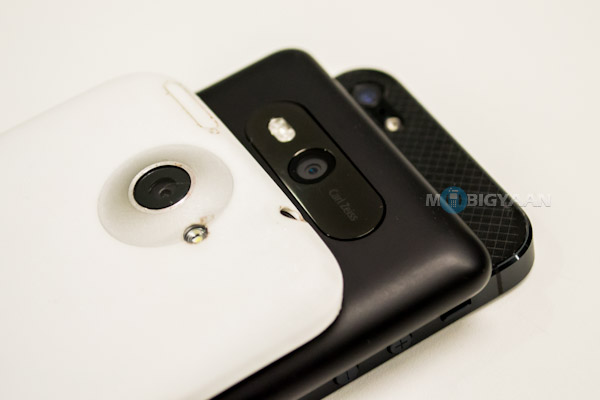
Camera
The primary camera boasts an 8 mega pixel carl zeiss lens 26mm wide and F2.2. It has a dual LED flash. The camera UI is very simple and straight forward. It has few controls but lots of settings. It can cater to a basic users and advanced users at the same time. ‘Lenses’ is an interesting feature in the camera UI. It opens up a few interesting camera related apps like the cinemagraph, panorama or smart shoot. The image quality is pretty decent. It doesn’t generate super sharp images with perfect colors. The images are bit grainy and over sharpened. The Lumia 820 can shoot 1080p and 720p videos. The video quality is very good.
Here are some sample images
Connectivity
With respect to connectivity, the Nokia Lumia 820 has everything under the sun. It’s a quad band device with GSM, GPRS, EDGE, 3G with HSPA and also supports penta-band 4G LTE. It has WiFi, Bluetooth 2.1, and NFC for local connectivity. Ah! No HDMI for Lumia 820. The bundled in Internet Explorer browser does a very good job as a browser. But I faced a few issues with the connectivity. When the mobile is idle, the WiFi connection goes to sleep. I found this very irritating as this was interrupting the download activity. If for some network specific reason, the GPRS connection goes off, it’s very difficult to get the connectivity back. And the worst part is the notification bar. It just wouldn’t stay on always. Keeps hiding itself and doesn’t inform me the status of the connection. If I had to take any action or tweak the settings, Ill have to navigate all the way to the app list to find the setting and then find the WiFi or data connection settings. How easier would have it been, if the notification bar has short cuts to connectivity.
Software
Windows 8, the pinnacle of software engineering from Microsoft fails to stand tall. Though Nokia has done its best to bring out the best hardware integration, WP8 fails to strap on to that effort. Yes, WP is fast, fluid, and minimalistic. But it’s no different from the earlier versions. Microsoft have to listen to the users and that’s the key to develop a better user experience. If you don’t fix the problems, users are not going to come back. The app store is still pathetic compared to the Android and IOS markets. There are quite a few good apps bundled with the phone. Nokia Drive, Cinematograph, Smart Shoot are a few good ones to mention. The mobile doesn’t have FM radio, but that gap is filled in by Nokia Music and Mix Radio. These two apps are really exiting for the music lovers. Windows Phone eco-system has still got a long way to perfection. Just start your baby steps by listening to user feedback.
Performance
The Lumia 820 is powered by a 1.5 GHz dual core Qualcomm Snapdragon S4+ processor. It has 1 GB of RAM and 8 GB of internal memory. WP 8 runs on this horse power. It feels very smooth and runs effortlessly. A 1650 mAh battery? Seriously, is that all you got? Nokia could have given a bigger battery. With normal usage (1 hour talk time, few clicks, 2G connection always on, few minutes spent on browsing) the battery lasts for 24 hours. If you start playing games or watch video, it drains much faster. The telephony is of high quality as the standards set by Nokia. The loudspeaker is a bit weaker compared to my HTC One X. But otherwise this device is one hell of a performer. The highest SAR value under the ICNIRP guidelines for use of the device at the ear is 0.79 W/kg. Anything under 1 W/kg is within the safe SAR limits. So this is a safe device as well.
Conclusion
This is a very good phone. This is aimed at the young and talented generation looking for style, performance and great user experience. If only its priced under Rs 22, 000 it would reach out to a wider crowd. But maybe that’s not what Nokia wants. Maybe they want to sell their device to the niche crowd and make it stand out as a style statement.
The device stands tall on its excellent build quality and smooth performance. It falls flat on battery life, but that’s pretty standard with most of the smart phones out there in the market. WP 8 has to improve and listen to user feedback. Microsoft needs to grow a healthy eco-system of developers to enrich the app store. Nokia and Microsoft need to gear up really fast, if they have to keep up with Android. Still the Lumia 820 is a massive upgrade from earlier devices. If you are looking for a non-android smart phone with great performance and remarkable design engineering, look no further than the Nokia Lumia 820.

